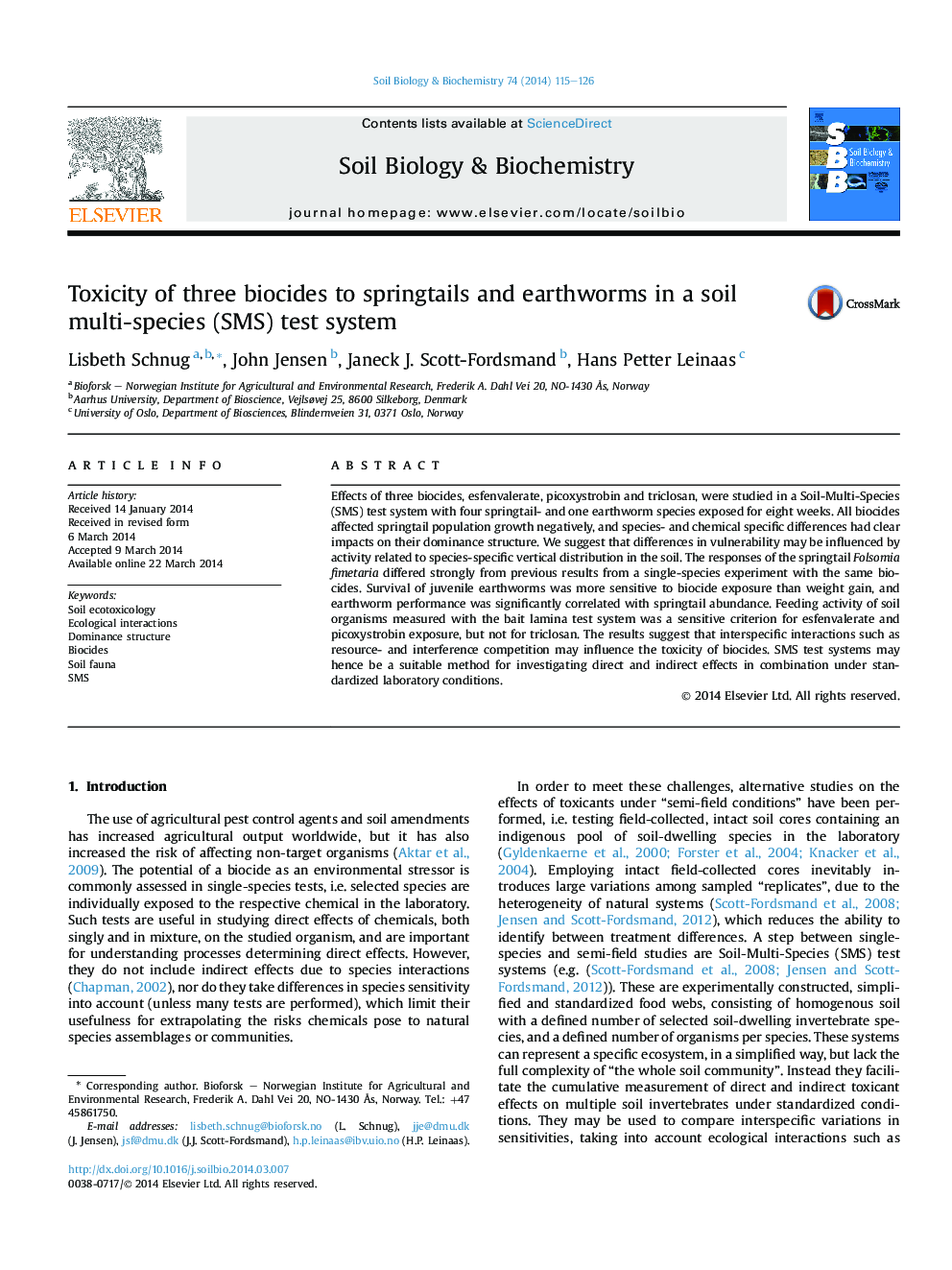| Article ID | Journal | Published Year | Pages | File Type |
|---|---|---|---|---|
| 2024619 | Soil Biology and Biochemistry | 2014 | 12 Pages |
•Springtail population growth was affected negatively by all biocides.•Survival of juvenile earthworms was more or equally sensitive as weight gain.•Dominance structure of springtails changed upon biocide exposure.•Sensitivity of the bait lamina test was chemical-specific.•Responses of Folsomia fimetaria were different from previous single-species tests.
Effects of three biocides, esfenvalerate, picoxystrobin and triclosan, were studied in a Soil-Multi-Species (SMS) test system with four springtail- and one earthworm species exposed for eight weeks. All biocides affected springtail population growth negatively, and species- and chemical specific differences had clear impacts on their dominance structure. We suggest that differences in vulnerability may be influenced by activity related to species-specific vertical distribution in the soil. The responses of the springtail Folsomia fimetaria differed strongly from previous results from a single-species experiment with the same biocides. Survival of juvenile earthworms was more sensitive to biocide exposure than weight gain, and earthworm performance was significantly correlated with springtail abundance. Feeding activity of soil organisms measured with the bait lamina test system was a sensitive criterion for esfenvalerate and picoxystrobin exposure, but not for triclosan. The results suggest that interspecific interactions such as resource- and interference competition may influence the toxicity of biocides. SMS test systems may hence be a suitable method for investigating direct and indirect effects in combination under standardized laboratory conditions.
